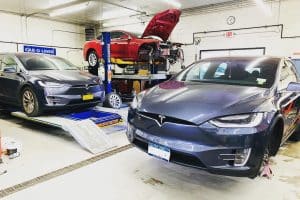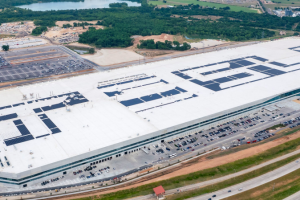- 🚘 A Tesla driver in Australia who blamed Autopilot for a hit-and-run crash with a pedestrian in March 2022 has pleaded guilty to dangerous driving.
- 🤥 The driver, Sakshi Agrawal, initially claimed Autopilot was engaged and that the pedestrian jumped in front of the car, but Tesla’s data and police analysis revealed she lied.
- 🕵️♀️ Tesla’s telemetry showed Autopilot was not activated, and the car detected a “vulnerable road user” and issued alerts before the collision, but no brakes were applied.
- 💨 After hitting the pedestrian, Agrawal’s Tesla sped up from 58 kph (36 mph) to 78 kph (48 mph) and fled the scene.
- ⚖️ Agrawal initially fought the charges but changed her plea to guilty on the eve of a trial, and she is expected to be sentenced on May 10, 2024.
The recent case of a Tesla driver in Australia who attempted to blame the company’s Autopilot system for a hit-and-run accident has shed light on the critical importance of accountability, responsibility, and the role of data in uncovering the truth. Sakshi Agrawal, the driver in question, initially claimed that Autopilot was engaged and that the pedestrian had jumped in front of her car, leading to the collision. However, as the investigation unfolded, the evidence painted a very different picture.
The Incident
On the morning of March 22, 2022, nurse Nicole Lagos was struck by Agrawal’s white Tesla Model 3 while attempting to board a tram in an inner south-eastern suburb of Melbourne, Australia. The vehicle was traveling at 58 kph (36 mph) when it hit Lagos, leaving her with serious injuries.
The False Claims
In a desperate attempt to evade responsibility, Agrawal initially claimed to investigators that it was dark during the morning of the crash and that she had turned on Autopilot. She further alleged that the nurse had jumped in front of the car, implying that the accident was unavoidable due to the limitations of the Autopilot system.
The Truth Revealed
However, Agrawal’s claims were swiftly debunked by the telemetry data from her Model 3 and police analysis of the incident. The evidence revealed that Autopilot was not activated at all 30 seconds before the collision occurred. Furthermore, Tesla’s data showed that the car had detected a “vulnerable road user” and triggered alerts about a potential collision moments before the impact.
In a shocking turn of events, the data also revealed that no brakes were applied after the crash, and Agrawal’s vehicle actually sped up to 78 kph (48 mph) as she fled the scene, leaving the injured nurse behind.
Accountability and Responsibility
Faced with overwhelming evidence, Agrawal spent two years fighting charges of dangerous driving causing serious injury and failure to stop. However, on the eve of a County Court trial scheduled for last week, she ultimately changed her plea to guilty.
This case serves as a stark reminder of the importance of accountability and responsibility in the context of vehicle operation and road safety. While advanced driver assistance systems like Autopilot can enhance safety, they do not absolve drivers of their fundamental duty to remain attentive and in control of their vehicles at all times.
The Role of Data
Moreover, this incident highlights the invaluable role of data in uncovering the truth and holding individuals accountable for their actions. Tesla’s telemetry data proved instrumental in debunking Agrawal’s false claims and providing a clear picture of what transpired during the accident.
As autonomous driving technologies continue to evolve, the availability and transparency of data will become increasingly crucial. It will not only aid in understanding the performance of these systems but also in ensuring that drivers are held accountable for their actions on the road.
Conclusion
The Tesla Autopilot hit-and-run case serves as a cautionary tale about the consequences of attempting to evade responsibility and the importance of embracing accountability. It also underscores the vital role that data plays in uncovering the truth and promoting road safety.
As the automotive industry continues to push the boundaries of autonomous driving, it is essential that both manufacturers and drivers prioritize transparency, responsibility, and a commitment to using technology responsibly. Only through a shared commitment to these principles can we ensure that the benefits of advanced driver assistance systems are realized while maintaining the highest standards of safety and accountability on our roads.
Agrawal’s sentencing, scheduled for May 10, 2024, will undoubtedly send a strong message about the consequences of reckless driving and the importance of taking responsibility for one’s actions. This case serves as a powerful reminder that no technology can replace the fundamental duty of drivers to operate their vehicles with care, attention, and a deep respect for the safety of all road users.





